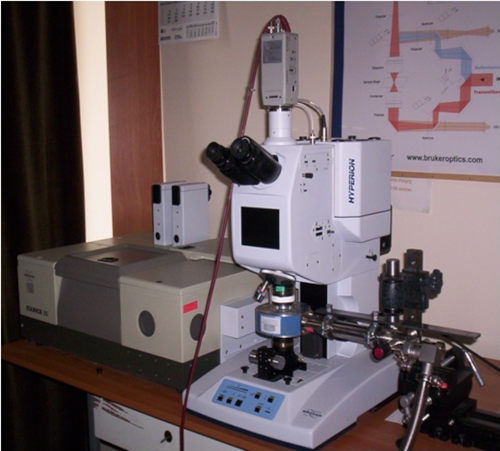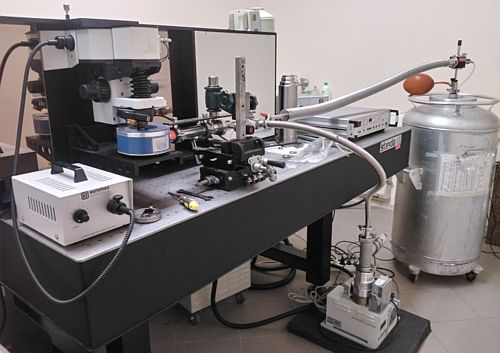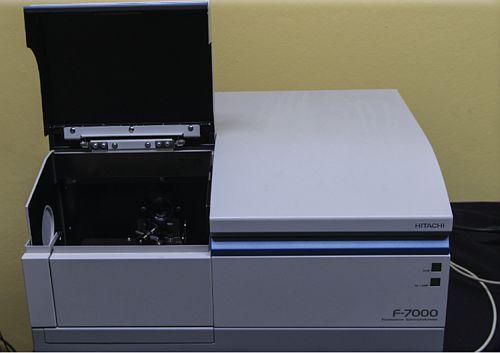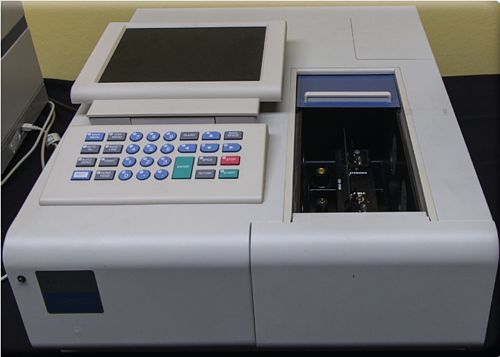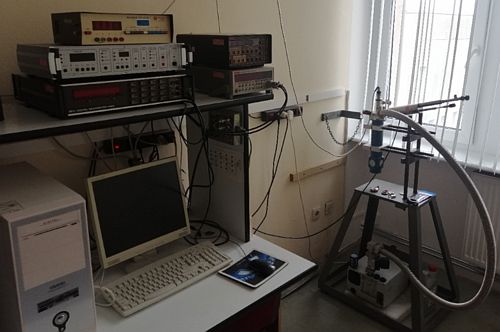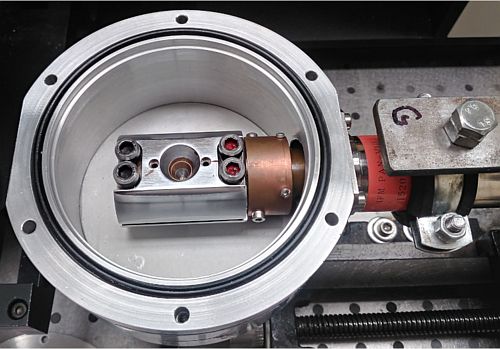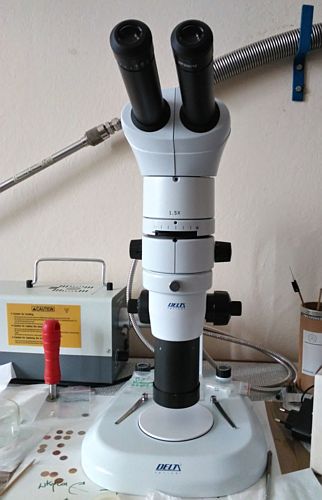Promoted doctorates
Malgorzata Widelicka
Defense Date: 2020-07-06 / Date of degree conferral: 2020-07-13
Subject: Optical, thermal, and transport properties of proton conductors of salts of dicarboxylic acids with different dimensionality of the hydrogen bonding network
Promoter: assoc. prof. Andrzej Łapiński, PhD, DSc
Reviewers: prof. Jan Baran, Ph.D., DSc, prof. Grażyna Bator, PhD, DSc
Aneta Pindela (née Suseł)
Defense date: 2020-07-02/ Date of degree conferral: 2020-08-26
Subject: Studies of the phenomenon of proton amine-imine tautomerism and stereoisomerism in 4-amino-1,3-thiazol-2(5H)-one derivatives
(interdisciplinary doctoral dissertation)
Promoters: prof. Andrzej Gzella, PhD, DSc, assoc. prof. Andrzej Łapiński, PhD, DSc
Reviewers: prof. Michał Marszał, PhD, DSc, prof. Maciej Kozak, PhD, DSc
Arkadiusz Frąckowiak
Defense Date: 2015-12-02 / Date of degree conferral: 2016-02-16
Subject: Charge localization in organic conductors with hydrogen and halogen bonds - studies by optical spectroscopy methods
Promoter: prof. Roman Świetlik, PhD, DSc
Reviewers: prof. Bolesław Kozankiewicz, , PhD, DSc, prof. Jacek Ulański, PhD, DSc
Damian Jankowski
Defense Date: 2013-06-10 / Date of degree conferral: 2013-06-25
Subject: Spectroscopic studies of charge localization in one-dimensional organic conductors formed by TTF derivatives
Promoter: prof. Roman Świetlik, PhD, DSc
Reviewers: prof. Juliusz Sworakowski, PhD, DSc, prof. Jacek Ulański, PhD, DSc
Bolesław Barszcz
Date of defense: 2008-09-30 / Date of degree conferral: 2008-10-28
Subject: Normal vibrations and intramolecular excitations in selected organic conductors of TTF derivatives
Promoter: prof. Andrzej Graja, PhD, DSc
Reviewers: prof. Bolesław Kozankiewicz, PhD, DSc, prof. Juliusz Sworakowski, PhD, DSc
Master's degrees promoted
-
Sc. Agata Piotrowska (2021)
-
Sc. Adam Mizera (2017)
-
Sc. Jacek Matysiak (2017)
-
Sc. Natalia Rosiak (2017)
-
Sc. Natalia Zborowska (2017)
-
Sc. Sylwia Zięba (2017)
-
Sc. Bartłomiej Gromadziński (2005)
-
Sc. Alicja Gąsecka (2005)
-
Sc. Krystian Klemt (2004)
-
Sc. Bolesław Barszcz (2003)
-
Sc. Roman Wesołowski (2002)
-
Sc. Anna Szutarska (2001)
Promoted engineers
-
Agata Piotrowska (2020)
-
Michał Walczak (2017)
-
Anna Wójcik (2017)
-
Natalia Zborowska (2017)
-
Adam Mizera (2016)
-
Jacek Matysiak (2016)
-
Natalia Rosiak (2016)
-
Sylwia Zięba (2016)
-
Michał Soja (2015)
Educational and popularization activities
-
Lectures for doctoral students of the International Doctoral Program at IMP PAS entitled "Molecular Spectroscopy" delivered by Prof. Roman Swietlik (winter semester 2000/2001, summer semester 2001/2002 ).
-
A series of lectures for doctoral students of the International Doctoral Program at IMP PAS entitled "Interactions of light with matter" delivered by Assoc. Prof. Andrzej Łapiński, (winter semester 2018, winter semester 2013).
-
Laboratory classes entitled. "The phenomenon of light absorption in everyday life" was organized in 2018 for high school students at IMP PAS in Poznań - Sylwia Zięba, M.Sc. Adam Mizera, M.Sc.
-
Popular science seminar entitled. "Photovoltaic boom" delivered as part of the European Funds Open Days on 10-05-2019 at IMP PAS - Bolesław Barszcz, Ph.D.
-
Participation in the organization of demonstrations for young people as part of the Night of Scientists organized at the IMP PAS in Poznan in 2019: "Lights in the Dark" - Sylwia Zięba, M.Sc., Boleslaw Barszcz, Ph.D., and "Nitrogen madness" - Iwona Olejniczak, Ph.D., Arkadiusz Frąckowiak, Ph.D.
-
Popular science lecture entitled. "Journey to the interior of the Earth - high pressures" delivered as part of the series "Fizyka Warta Poznania" 2019 at IMP PAS in Poznań - Sylwia Zięba, M.Sc.
-
Preparation and conduct of interactive demonstrations as part of the XXII Poznań Festival of Science and Arts, April 9, 2019 - Iwona Olejniczak, Ph.D.
-
Participation in the organization of demonstrations for young people as part of the Researchers' Night organized at the IMP PAS in Poznań in 2020: entitled. "Nitrogen madness" - Iwona Olejniczak, PhD, DSc, Boleslaw Barszcz, PhD, Arkadiusz Frąckowiak, PhD and "On the trail of greenhouse gases" - Iwona Olejniczak, PhD, DSc, Boleslaw Barszcz, PhD, Arkadiusz Frąckowiak, PhD
-
Participation in the organization of demonstrations for young people as part of the Night of Scientists organized at IMP PAS in Poznan in 2021: "Planet Earth - Warm, getting warmer" - Iwona Olejniczak, Ph.D., DSc, Boleslaw Barszcz, Ph.D. and "Meeting with light" - Boleslaw Barszcz, Ph.D., Sylwia Zięba, M.Sc., Adam Mizera, M.Sc.
-
Popular science lecture entitled. "Solar energy" delivered as part of the series "Fizyka Warta Poznania" in 2021 at the IFM PAN in Poznan - Boleslaw Barszcz, PhD
Popular science lecture entitled. "Changing the world for the better - how to take care of the climate and the environment" delivered as part of the series "Fizyka Warta Poznania" in 2022 at the IMP PAS in Poznań - Iwona Olejniczak, Ph.D., DSc.
-
Participation in the organization of the finals of the "Physics in Motion" competition in 2022 at the IMP PAS - Iwona Olejniczak, Ph.D., DSc, Boleslaw Barszcz, Ph.D., Adam Mizera, M.Sc.



